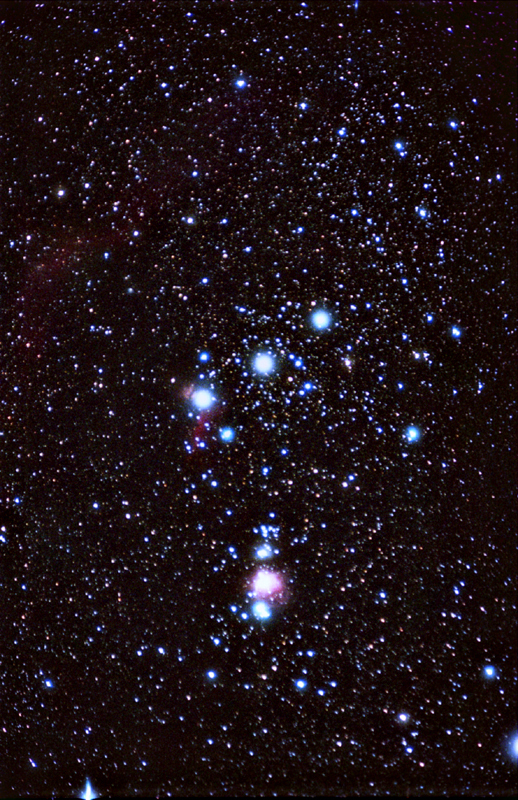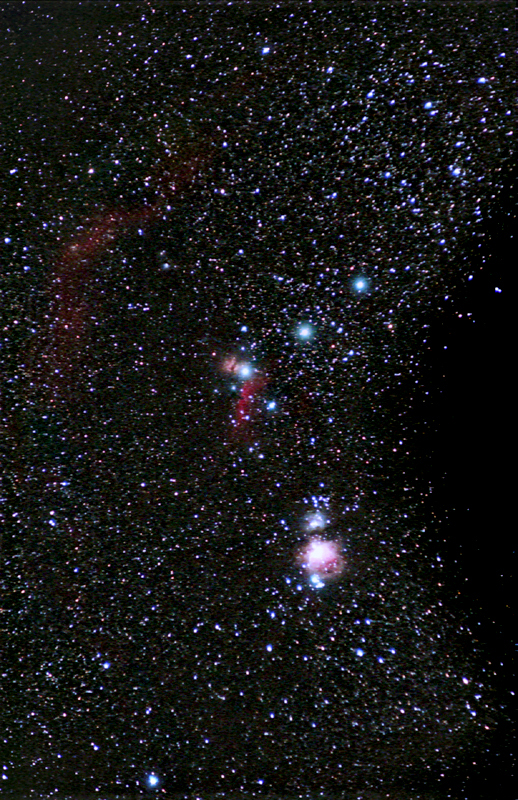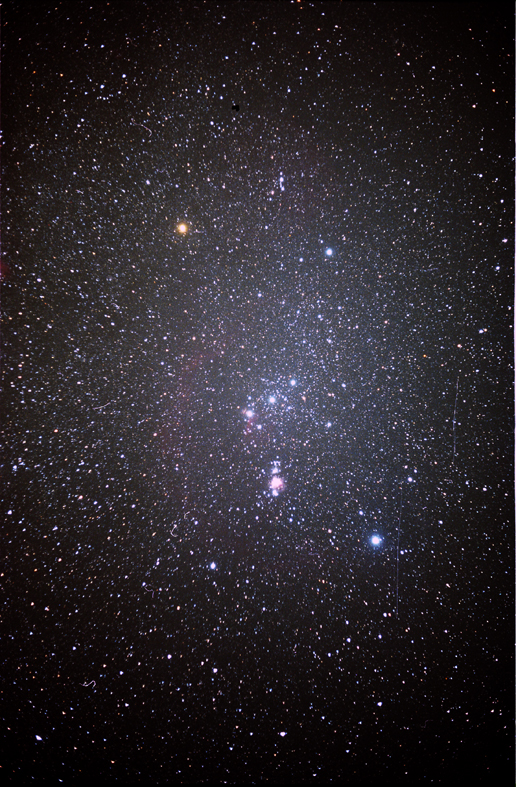
30 minutes exposure on Kodak Ektachrome 400 film. 50mm f/2.8 lens.

Orion is the favourite constellation of the majority of skywatchers. Situated on the celestial equator, it is easily visible from both hemispheres. It contains many bright stars, and a wide range of objects of all types. Many of these objects are visible in the photograph.
To the upper left is the bright orange star Betelguese, while to the lower right is the bright star Rigel. Both of these stars are of first magnitude.
The bright patch near the centre of the image is probably the most looked at deep-sky object of all, the Great Orion Nebula, M42. Visible to the naked eye, this magnificent object is probably the easiest nebula to observe with a small telescope.
To the upper left of M42 are the Flame nebula (NGC 2024) and the HorseHead nebula (B 33), while surrounding the centre regions is the huge arc of 'Barnard's Loop' (Sh2-276). This is an ancient supernova remnent.
To the upper right of Betelguese, surrounding the star lambda, is the coarse open cluster Cr 69, and surrounding that is the faint emission nebula Sh2-274. Partly in view on the left-hand edge is the Rosette nebula, NGC 2237/2238.

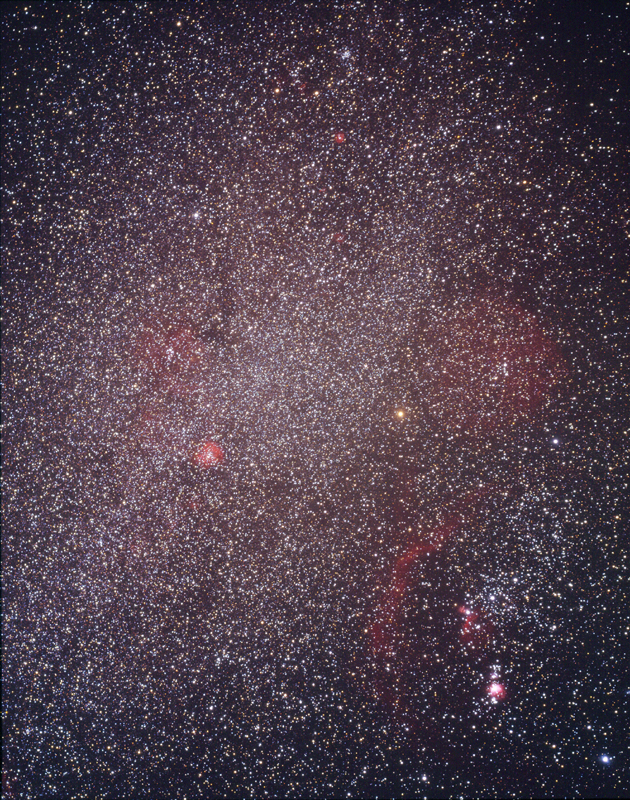
This photograph shows western Gemini and M35 at the top, Monoceros on the left and Orion on the right.
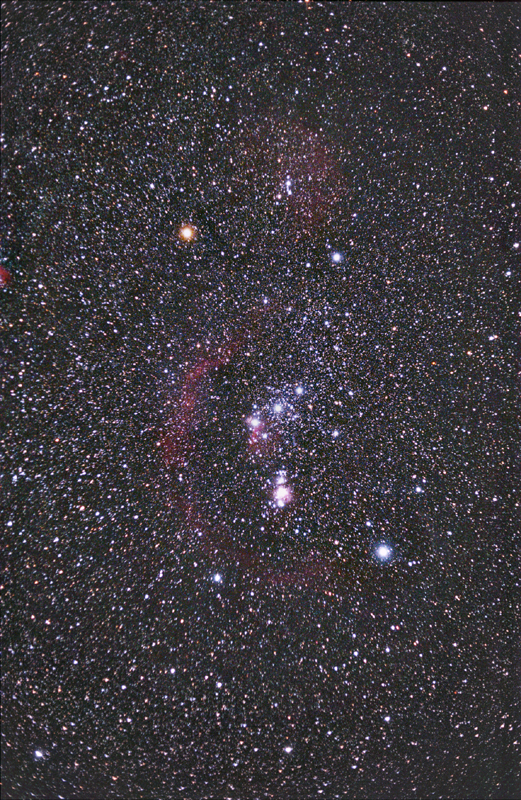
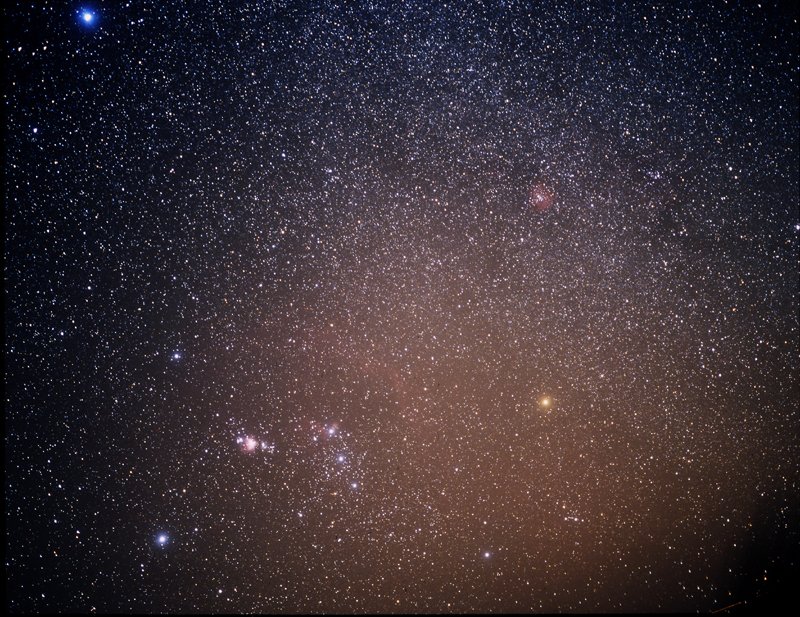
By early June, winter has arrived in Western Australia, bringing with it cool nights and rain. It is also the time to say goodbye to Orion for a few weeks as it sinks below the western horizon, not to show its face again until the scorpion disappears.
